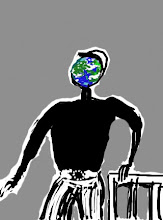To spend even a short time amongst the vast, mostly uncatalogued resources of nineteenth-century photographs in the British Library is to realise something important about the mentality of early photographers; and therefore about people who take photographs as a whole. I want to put aside, for a moment, the very many portraits that were snapped in this era, people in their Sunday best standing stiffly before painted screens or alongside potplants. I want, instead, to talk about photographs of the nineteenth-century city. What we would like, of course, as twenty-first century voyeurs, are: snaps of ordinary Victorian existence; of slums and thoroughfares, of horses and shops, the mundane clutter of London life, all the things that were so comprehensively swept away by the Blitz. We very rarely get this. Instead we find endless numbers of photographs of: Saint Paul’s Cathedral; Westminster Abbey; Cleopatra’s needle; the Houses of Parliament. And here’s the thing: they look exactly as the same then as now. These are monuments that people have spent, and continue to spend, a deal of time and effort preserving from decay. What this means is that Victorian snappers did not photograph for the benefit of posterity, even though they often talked precisely as if they did. A moment’s thought would have been enough to persuade them: it is likely that the dome of St Pauls will still be standing a century and a half hence; but these slums, those beggars, they will likely have passed away. No: the Victorians photographed for themselves, to reinforce the public discourses of ‘significance’ and ‘importance’ (why photograph an unimportant building, when a great cathedral is just around the corner?)
Photography is not a record, except of one thing: the photographer’s proximity to the photographed edifice. Hence the passion, which still endures today, for photographing the much-photographed (as if the world really needs another image of the Taj Mahal, or New York’s ground zero). The photograph is a flat icon of ‘I was there’-ness, and in the overwhelming majority of cases it’s nothing more than that. And we don’t want to say ‘I was there next to triviality.’ We want to try and appropriate, by the magical osmosis of proximity, greatness.
Saturday, 18 November 2006
Subscribe to:
Post Comments (Atom)

No comments:
Post a Comment